Templates allow you to apply predefined preferences and/or notifications settings to computer accounts, client accounts, or groups. This helps you change the settings for one or multiple computer accounts without having to edit them manually. There are three types of templates: preferences templates, notifications templates, and overage alert templates.
- Preferences templates change the way the software operates (e.g. bandwidth throttling and worker count)
- Notifications templates determine how often and for what reasons notifications will be given by the software
- Overage alerts templates give you and your clients a way of being notified if an account approaches its data limit.
It is important to understand that templates, when applied, only make the changes once; they are not persistent, or, put another way, to do not enforce the changes they set.
Creating Templates
- Log in to the management portal, click on the Preferences tab, then go to the Manage Templates link.
- To create a new template, choose the tab of the template type you want and hit the Add Template button in the upper-right.
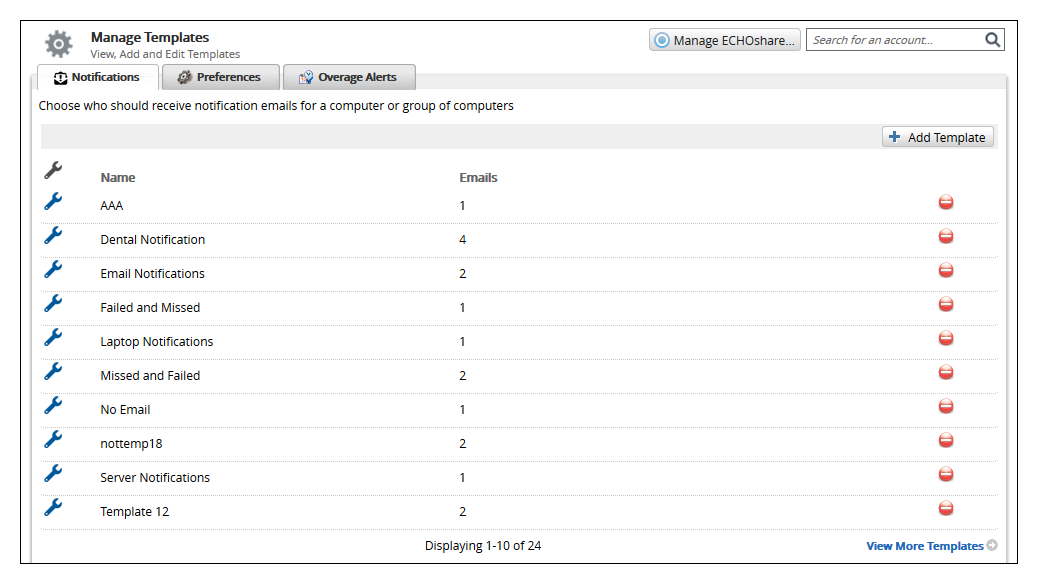
- If you are making a preferences template continue to Creating a Preferences Template. If you are making a notifications template, go to Creating a Notifications Template. For overage alert templates, see Creating an Overage Alerts Template.
- When you are finished crafting the template, hit Save to finish the template.
Creating a Preferences Template
When creating a preferences template, you do not have to set each option. The only options that will be applied by the template are those which you place a check mark next to. Those which are unchecked will remain at the default setting or in the state they were prior to the template being applied.
The first page of the preferences template is System Preferences. An explanation of each option under System Preferences are as follows: - Concurrent Workers - The number of concurrent workers (or threads) determines how many items will be worked on simultaneously during a job. Increasing the worker count may help the speed of backup or restore jobs, however, this is only true if the machine has enough resources for the additional workers. Otherwise, turning up the worker count will make each worker slower, diminishing most performance improvements.
- File Retries - This option determines how many times the software will try to back up a file if it fails the first time (this option only applies to File and Folder backups). Increasing the file retries may help backups that frequently get upload or access errors related to connectivity.
- Wildcard Exclusions - Prevent certain files or folders from being backed up by targeting them with wildcard exclusions. More information about how to use wildcard exclusions can be found here.
- Stray File Retention - The stray file retention option determines how long and under what conditions the software will keep stray files; stray files are ones that were, at some point, backed up on the machine but were later deleted or renamed. More information about stray files is here.
| 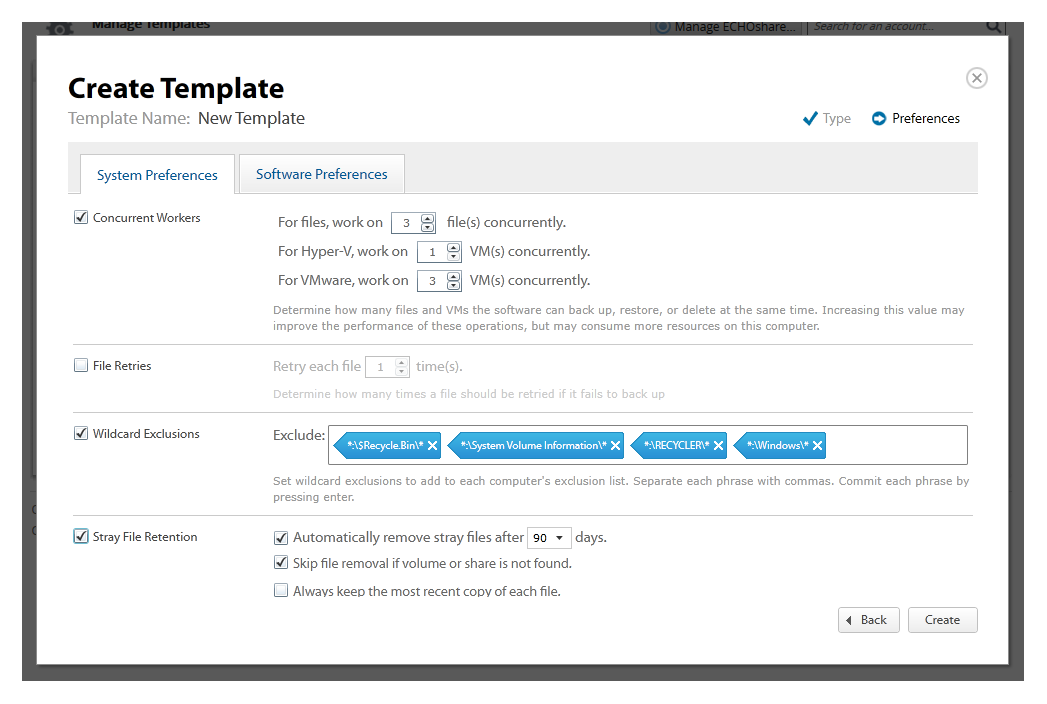 |
The second page of the preferences template is Software Preferences. Those options are as follows: Bandwidth Throttling - The option to throttle bandwidth allows you to keep the network throughput of the software at a level that does not interfere with a client's network. You can choose which days and times the bandwidth will be throttled and what level it will be throttled to (in kb/s). If you want throttling to apply all week, set the day range to Sunday through Saturday (not Sunday through Sunday or Saturday through Saturday) and if you want throttling to apply all the time, set the time range for 12:00 am through 11:59 pm (not 12:00 am through 12:00 am). Bandwidth throttling only applies to uploads to or downloads from Intronis's servers. Uploads to and downloads from a NAS device or other internal network location registers as a "local" transfer and will not be throttled. - Upload Logs - If this option is selected, the logs from backup, restore, or delete jobs will be automatically uploaded after the job finishes. This will help when viewing the logs from the management portal.
| 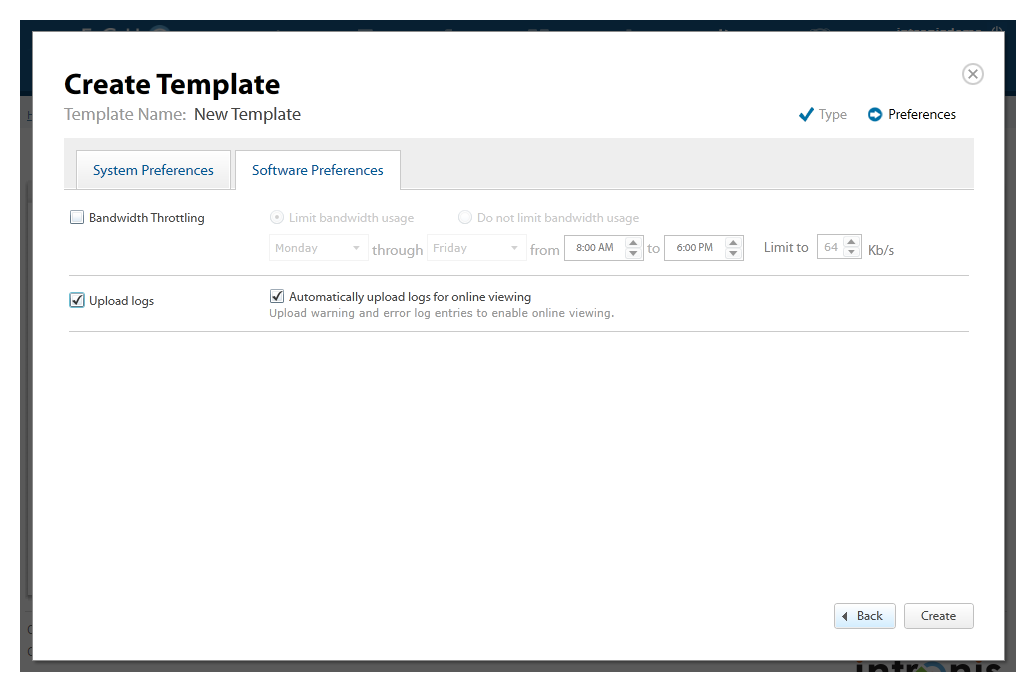 |
Creating a Notifications Template
The first page of the notifications template is the Emails page. Here, you will specify what notifications will be sent to which email addresses. To set a rule for the email address already associated with the computer account, click on the Add Main Email button. To add a rule for a separate email address, click on the Add Extra Email and type the email address into the line which populates. For either the main email or other, extra emails, check the boxes under the notification type you want that email address to receive. For a guide on changing what events trigger which notifications, see the article on configuring reporting. | 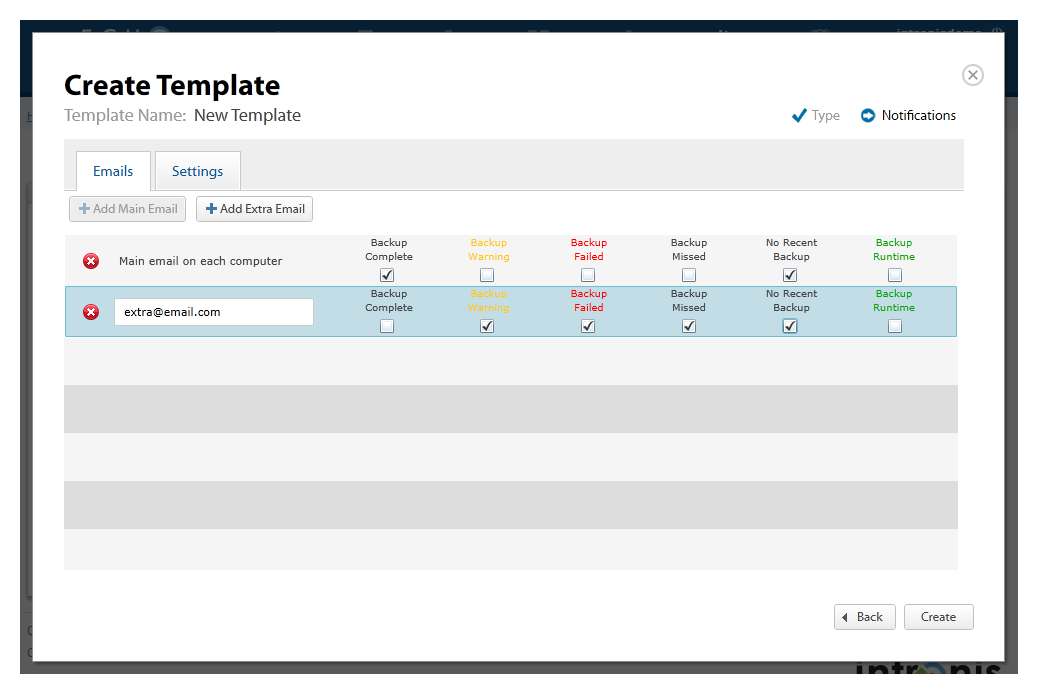 |
The second page of the notifications template is the Settings page. An explanation of each setting is as follows: - Notification Preferences - If you have chosen to receive Backup Complete, Backup Warning, or Backup Failed notifications, you can choose to add Include Failed Items, Include No Files Notice, or both to those notifications. If a backup job is warning or failed, Include Failed Items will tell you which files the backup job erred on while the Include No Files Notice will tell you if the backup job backed up no new files.
- No Recent Backups - This option will alert you to the fact a backup job has not run after some period of time. You can specify how long that period of time is as well as how often the No Recent Backups notification is sent out after the fact.
- Backup Runtime - Similar to the No Recent Backups notification, this notification alerts you to the fact a backup job has run longer than some period of time.
- Recurring-Interval Scheduled Backups - Recurring-interval scheduled backups are ones that may run many times every day. This being so, they have the potential to trigger many notifications in a short amount of time. To deal with this scenario, you can choose to disable Backup Complete or Backup Warning notifications entirely for these sorts of backup sets. Additionally, you choose to only receive a Backup Failed notification for recurring-interval scheduled backups if they fail a specific number of times, consecutively.
If the No Recent Backups or Backup Runtime options are grayed-out on the Settings page, it is because none of the email addresses from the Emails page are set to receive these types of notifications. | 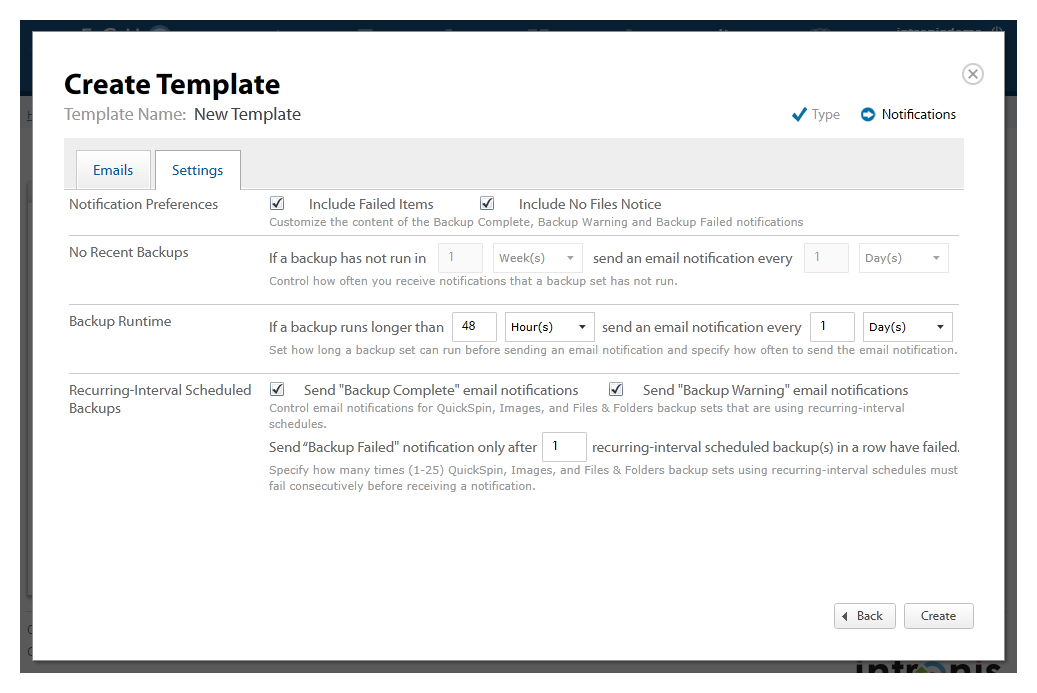 |
Creating an Overage Alerts Template
On the Add Template: Overage Alerts page, you will first specify which emails receive alerts and the type of alerts they receive. Add emails and pick whether the alert they receive is based on the package plan or the custom billing plan, what percentage of the plan will trigger an alert, and how often the alert will be sent.
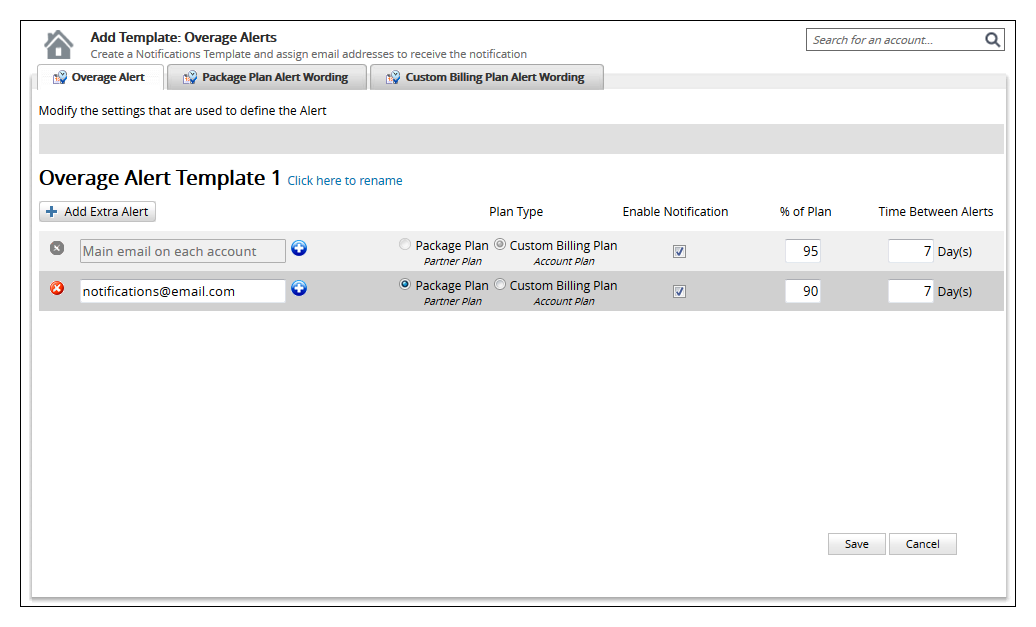
In the other tabs, you can edit the wording and formatting of the overage alerts sent out.
Now that you have created your template, you can apply it to one or multiple computer accounts.






